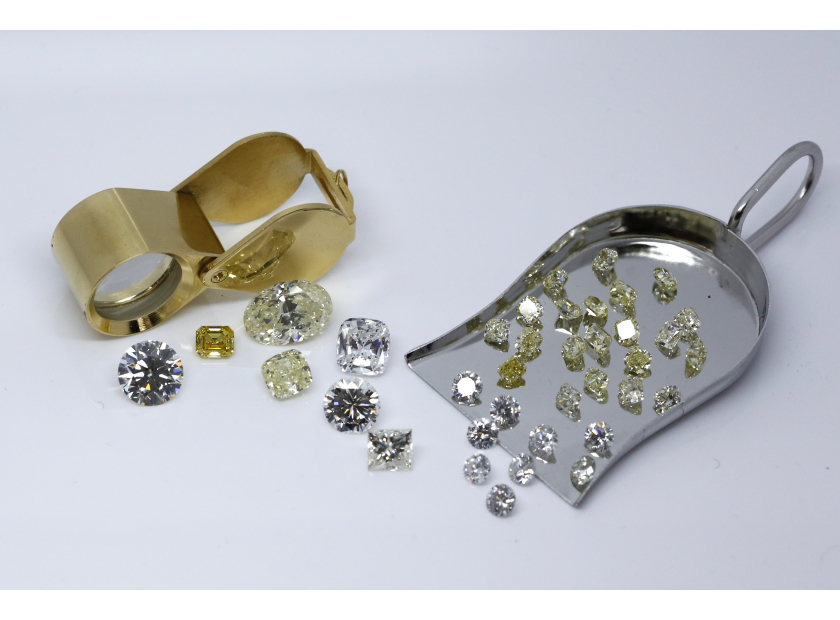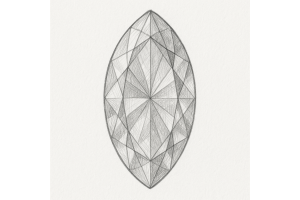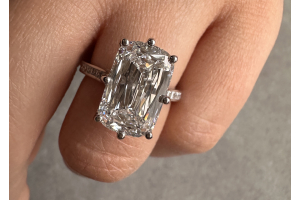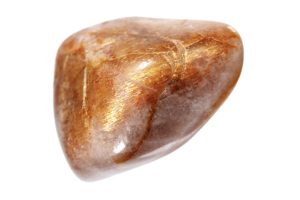USD
/
USD
/
Shipping to:
Currency:
Lab-grown diamonds have revolutionized the jewelry industry, offering a sustainable and ethical alternative to mined diamonds. Among these, fancy color lab-grown diamonds have gained significant attention for their striking hues and affordable luxury. But what exactly goes into the creation of these dazzling gems? Understanding the intricate process behind the formation of fancy color lab-grown diamonds can enhance your appreciation of their beauty and uniqueness.
The process of creating fancy color lab-grown diamonds
The creation of fancy color lab-grown diamonds begins with the careful selection of a carbon seed, which serves as the foundation for the diamond. This seed is placed in a highly controlled environment, where it undergoes a process known as Chemical Vapor Deposition (CVD) or High Pressure High Temperature (HPHT) growth. In the CVD method, carbon atoms are deposited onto the seed layer by layer, while HPHT mimics the intense heat and pressure found deep within the Earth’s mantle.
To achieve the vibrant colors that distinguish fancy color diamonds, specific elements are introduced during the growth process. For example, nitrogen can create a yellow hue, while boron results in a blue diamond. The precise manipulation of these elements within the growth chamber determines the final color of the diamond. This process requires immense skill and precision, as even slight variations can alter the resulting color. The expertise involved in this phase is akin to that of an artist blending pigments on a canvas, with the diamond taking shape as a masterpiece of color and brilliance.
Once the diamond has grown to the desired size, it is carefully extracted from the chamber and undergoes a thorough evaluation. At this stage, the diamond is examined for clarity, color consistency, and overall quality. If the diamond meets the stringent standards, it is then cut and polished to bring out its inherent beauty. The cutting process is particularly critical for fancy color diamonds, as the angles and facets must be precisely aligned to enhance the stone’s color intensity.
The uniqueness of fancy color lab-grown diamonds
Fancy color lab-grown diamonds are not only unique in their creation but also in their appearance. Unlike colorless diamonds, which are prized for their lack of hue, fancy color diamonds are valued for their vibrant colors. These colors can range from soft pastels to deep, vivid tones, each carrying its own allure and personality. The rarity of achieving certain colors, such as pink or green, adds to the desirability of these diamonds.
Moreover, lab-grown diamonds offer a level of customization that is difficult to achieve with mined diamonds. Because the conditions under which they are grown can be precisely controlled, it is possible to create diamonds with specific color intensities and characteristics. This customization makes fancy color lab-grown diamonds an attractive choice for those seeking a truly personalized piece of jewelry.
In addition to their beauty and rarity, fancy color lab-grown diamonds are an ethical and environmentally friendly choice. The traditional diamond mining industry has long been associated with environmental degradation and human rights issues. Lab-grown diamonds, on the other hand, require significantly fewer resources to produce and have a much smaller carbon footprint. By choosing a lab-grown diamond, you are making a conscious decision to support sustainable practices in the jewelry industry.
The future of fancy color lab-grown diamonds
As technology continues to advance, the future of fancy color lab-grown diamonds looks incredibly promising. Innovations in diamond growing techniques are allowing for even greater precision in color creation and quality control. This means that we can expect to see an even wider range of colors and improved quality in the lab-grown diamonds of the future. Furthermore, as consumer demand for ethical and sustainable products increases, the popularity of lab-grown diamonds is likely to continue growing.
Another exciting development in the field is the potential for new color possibilities. Researchers are constantly experimenting with different elements and growth conditions to create unique and previously unseen diamond colors. This could lead to the introduction of entirely new categories of fancy color diamonds, further expanding the options available to consumers.
FAQ
What makes lab-grown fancy color diamonds different from natural ones?
Lab-grown fancy color diamonds are created in a controlled environment, allowing for precise manipulation of the elements that cause color. While natural fancy color diamonds form over millions of years under the Earth’s surface, lab-grown diamonds are produced much more quickly, with similar physical and chemical properties.
Are lab-grown fancy color diamonds real diamonds?
Yes, lab-grown fancy color diamonds are real diamonds. They have the same physical, chemical, and optical properties as natural diamonds, and are nearly indistinguishable from them. The main difference lies in their origin; lab-grown diamonds are created in a lab rather than mined from the Earth.
How long does it take to grow a fancy color diamond in a lab?
The time required to grow a fancy color diamond in a lab can vary depending on the desired size and color. On average, the process can take a few weeks to a couple of months. This is significantly faster than the natural formation process, which takes millions of years.
Are fancy color lab-grown diamonds available in all colors?
Fancy color lab-grown diamonds are available in a wide range of colors, including yellow, blue, pink, green, and even black. However, some colors are more challenging to achieve and may be rarer than others. Advances in technology are continually expanding the available color palette.
Do lab-grown fancy color diamonds hold their value?
While lab-grown diamonds typically have a lower resale value compared to natural diamonds, they are still a valuable investment, particularly for those who prioritize ethical and sustainable choices. Their value can be influenced by factors such as color intensity, size, and overall quality.
How do you care for a fancy color lab-grown diamond?
Caring for a fancy color lab-grown diamond is similar to caring for any other diamond. Regular cleaning with a mild solution of soap and water, along with gentle brushing, can help maintain its sparkle. It's also recommended to have the diamond professionally cleaned and inspected periodically to ensure it remains in excellent condition.
Can you customize the color of a lab-grown diamond?
Yes, one of the advantages of lab-grown diamonds is the ability to customize their color. By adjusting the elements introduced during the growth process, it's possible to create diamonds with specific color intensities and hues, allowing for a personalized and unique piece of jewelry.
Are lab-grown diamonds environmentally friendly?
Lab-grown diamonds are considered more environmentally friendly than mined diamonds. Their production requires fewer resources and has a significantly lower environmental impact, making them a more sustainable choice for consumers.
What is the price difference between lab-grown and natural fancy color diamonds?
Lab-grown fancy color diamonds are generally more affordable than their natural counterparts. This price difference is due to the controlled production process, which allows for greater availability and lower costs compared to the rarity and high extraction costs associated with natural diamonds.
Where can I buy fancy color lab-grown diamonds?
Fancy color lab-grown diamonds are available through a variety of jewelry retailers, both online and in-store. It's important to choose a reputable seller who can provide certification and detailed information about the diamond's origin, quality, and color grading.









